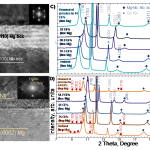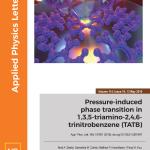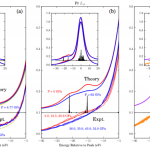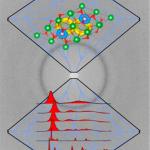A recent article in Science Advances has been selected as one of the Advanced Photon Source's science highlights. The team of researchers, led by Tim Strobel and Li Zhu of Carnegie Institution for Science, used advanced structure searching tools to predict the first thermodynamically stable carbon-based clathrate and then synthesized the clathrate… more
HPCAT Group Leader, Maddury Somayazulu, was recently featured in the October 2019 issue of Scientific American. The article highlights some of Dr. Somayazulu’s scientific work, and in particular his effort in using high pressure and synchrotron x-ray techniques toward understanding and discovery of room-temperature superconductors. Dr. Somayazulu, along with HPCAT partner Professor Rus Hemley (University of Illinois at Chicago) and collaborators from Geophysical… more
HPCAT facilities, located at the Advanced Photon Source, were used in a recent research work in order to study a unique material system – pseudomorphic body center cubic (bcc) magnesium. The team, led by Mr. Manish Jain, a Ph.D. student from the University of Nevada, Reno, utilized bi-phase interface strain engineering to transform Mg… more
Researchers from Lawrence Livermore National Laboratory, University of Nevada Las Vegas, Argonne National Laboratory, and University of Chicago have found a subtle phase transition in 1,3,5-Triamino-2,4,6- trinitrobenzene (TATB). TATB is an important compound in the energetic materials community as it is a highly stable, insensitive explosive. A more complete understanding of this and other energetic materials is crucial for practical use as well as the development of theoretical models. Extensive single-crystal diffraction experiments were carried out at HPCAT—located at… more
Congratulations to Professor Yogesh K. Vohra, long time HPCAT user and NNSA-SSAA partner, and team for recognition of their work in part performed at HPCAT. Their article, authored by Samuel L. Moore, Gopi K. Samudrala, Shane A. Catledge, and Yogesh K. Vohra, "… more
The satellite of the 4d3/2 – 2p1/2 emission line (Lγ) has been traditionally interpreted as a signature of the bare (unscreened) magnetic moment of the 4f electrons in the lanthanides [see e.g. B. Maddox et al., PRL 96, 215701 (2006)]. Here, a collaboration of theorists from the University of California at Davis and Stanford along with experimenters from the University of Washington and Lawrence Livermore National Laboratory find that the intensity of the satellite structure of the early light… more
LLNL and HPCAT scientists recently published an article in RSI describing a high-speed multichannel pyrometer system they developed for measuring the temperature of samples in laser heating experiments. The system has been used with success at HPCAT. The team is looking into assembling a system for permanent installation at HPCAT. For more, see Rev. Sci. Instru. 89, 125117 (2018).







